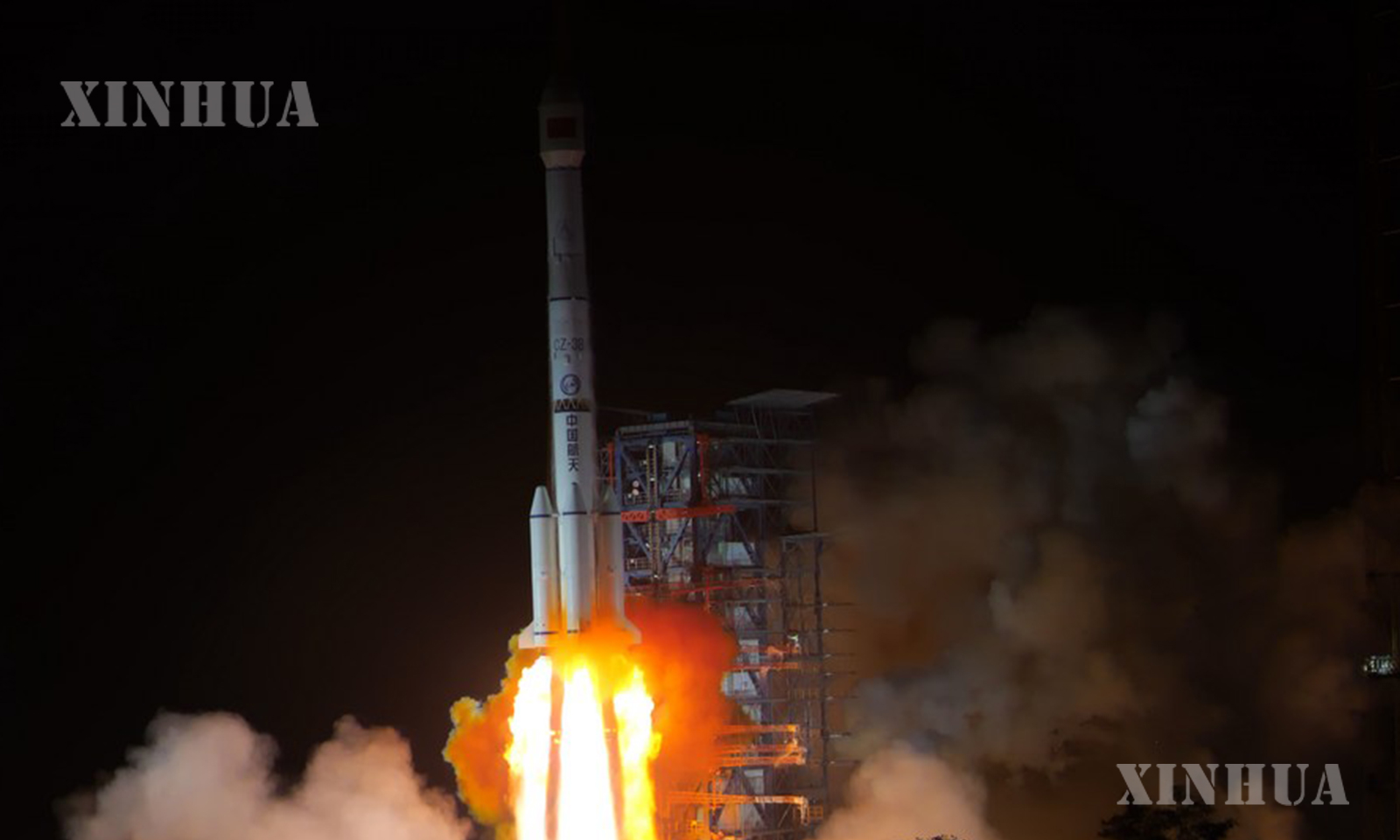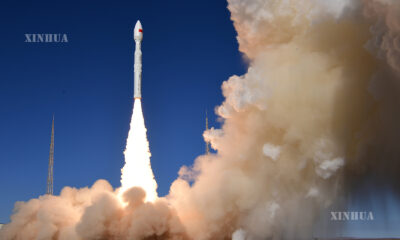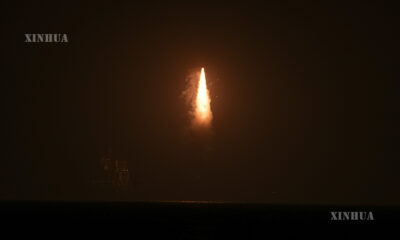Science & Technology
တရုတ်နိုင်ငံက ၂၀၂၂ ခုနှစ်တွင် လူလိုက်ပါနိုင်သော အာကာသယာဉ် ပျံသန်းမှုခြောက်ကြိမ်နှင့် ဒုံးပျံ ပွဲဦးထွက်ပျံသန်းခြင်း ဆောင်ရွက်သွားမည်

ပေကျင်း၊ ဖေဖော်ဝါရီ ၁၀ ရက် (ဆင်ဟွာ)
တရုတ်နိုင်ငံသည် ၂၀၂၂ ခုနှစ်အတွင်း အာကာသစခန်း တည်ဆောက်မှု ပြီးစီးရန် လူလိုက်ပါနိုင်သော အာကာသယာဉ်ပျံသန်းမှု ခြောက်ကြိမ် ပြုလုပ်သွားမည်ဖြစ်ကြောင်းနှင့် နိုင်ငံ၏ ပထမဆုံး အစိုင်အခဲနှင့် အရည် လောင်စာသုံးအင်ဂျင်ဖြင့် မောင်းနှင်သည့် Long March-6A ဒုံးပျံ ပွဲဦးထွက်ပျံသန်းခြင်းကို ဆောင်ရွက်သွားမည်ဖြစ်ကြောင်း သိရသည်။တရုတ်နိုင်ငံ လေယာဉ်တည်ဆောက်မှုနည်းပညာ သိပ္ပံနှင့် နည်းပညာ ကော်ပိုရေးရှင်း (CASC) ၏ အာကာသဌာန လက်ထောက်ညွှန်ကြားရေးမှူး Ma Tao က ဖေဖော်ဝါရီ ၉ ရက်၌ ပြုလုပ်ခဲ့သော သတင်းစာ ရှင်းလင်းပွဲတွင် တရုတ်နိုင်ငံ၏ ဒုံးပျံလွှတ်တင်ရေး အစီအစဉ်ကို ပြောကြားခဲ့ခြင်းဖြစ်သည်။
တရုတ်နိုင်ငံ၏ ဒုံးပျံစီးရီးထုတ်လုပ်ရေးနှင့် နိုင်ငံ၏ အာကာသဆိုင်ရာစက်မှုလုပ်ငန်း ဦးဆောင်လုပ်ငန်းဖြစ်သော CASC သည် ၂၀၂၁ ခုနှစ် လေယာဉ်တည်ဆောက်မှုနည်းပညာ သိပ္ပံနှင့် နည်းပညာစာအုပ် (2021 Blue Book of China Aerospace Science and Technology) ကို ထုတ်ပြန်ခဲ့သည်။
တရုတ်နိုင်ငံသည် ၂၀၂၁ ခုနှစ်တွင် အာကာသယာဉ်လွှတ်တင်ရေးမစ်ရှင် ၅၅ ခုကို ဆောင်ရွက်ခဲ့ပြီး ယင်းအရေအတွက်သည် ကမ္ဘာပေါ်တွင် ပထမအဆင့်ဖြင့် ရပ်တည်နေပြီး ၎င်း၏ စုစုပေါင်း အာကာသယာဉ်လွှတ်တင်မှု စုစုပေါင်း ထုထည်ပမာဏသည် ၁၉၁.၁၉ တန်အထိ ရောက်ရှိလာခဲ့ပြီး တစ်နှစ်ထက်တစ်နှစ် ၈၅.၅ ရာခိုင်နှုန်း တိုးလာသည်ဟု သိပ္ပံနှင့် နည်းပညာစာအုပ်အရ သိရသည်။
CASC သည် ၂၀၂၁ ခုနှစ်တွင် ပစ်လွှတ်မှု ၄၈ ကြိမ်နှင့်အတူ ဂြိုဟ်တု ၁၀၃ စင်းကို အာကာသထဲ ပို့ဆောင်ခဲ့ကြောင်း ပေကျင်း အာကာသ သိပ္ပံနှင့် နည်းပညာ သတင်းအချက်အလက်အင်စတီကျု၏ ဒါရိုက်တာ He Yang က သတင်းစာရှင်းလင်းပွဲတွင် ပြောကြားခဲ့သည်။
ထို့ပြင် ယမန်နှစ်က တရုတ်နိုင်ငံ၏ အခြားအောင်မြင်သော အာကာသမစ်ရှင်များတွင် Kuaizhou-1A သယ်ဆောင်ရေးဒုံးပျံဖြင့် လွှတ်တင်မှု သုံးကြိမ်နှင့် CERES-1 သယ်ဆောင်ရေးဒုံးပျံမှ လွှတ်တင်သည့် တစ်ကြိမ်တို့ ပါဝင်ကြောင်း ၎င်းက ဆိုသည်။
၂၀၂၁ ခုနှစ်တွင် ကမ္ဘာပေါ်တွင် အာကာသယာဉ်လွှတ်တင်မှု ၁၄၆ ကြိမ်ရှိခဲ့ကြောင်း၊ ယင်းအကြိမ်အရေအတွက်မှာ အာကာသအတွင်းသို့ အာကာသယာဉ်လွှတ်တင်မှု ၁,၈၄၆ ကြိမ်ရှိခဲ့သော ၁၉၅၇ ခုနှစ်မှစ၍ အမြင့်ဆုံး အရေအတွက်ဖြစ်ကြောင်း သိရသည်။
အမေရိကန်နိုင်ငံသည် ၂၀၂၁ ခုနှစ်တွင် အာကာသယာဉ်လွှတ်တင်ရေး မစ်ရှင် ၅၁ ခုကို ဆောင်ရွက်ခဲ့ပြီး စုစုပေါင်း လွှတ်တင်ခဲ့သော အာကာသယာဉ် ထုထည်ပမာဏမှာ ၄၀၃.၃၄ တန်အထိ ရောက်ရှိခဲ့ကြောင်း ၎င်းစာအုပ်တွင် ဖော်ပြထားသည်။ (Xinhua)
—————————————-
(English Version)
China to make 6 human spaceflights, rocket’s maiden flight in 2022
BEIJING, Feb. 9 (Xinhua) — China will make six manned space flights in 2022 to complete the building of its space station and see the maiden flight of Long March-6A, the country’s first carrier rocket powered by a solid and liquid engine.
Ma Tao, deputy director of the Space Department of the China Aerospace Science and Technology Corporation (CASC), revealed on Wednesday China’s rocket launch plan at a press conference.
CASC, China’s rocket series developer and the leading force of the country’s space industry, released the 2021 Blue Book of China Aerospace Science and Technology.
China carried out 55 space launch missions in 2021, with this number ranking first in the world, and its total mass of spacecraft launched reached 191.19 tonnes, an 85.5 percent year-on-year increase, according to the blue book.
The CASC brought 103 aircraft into space with 48 launches in 2021, said He Yang, director of Beijing Institute of Space Science and Technology Information, at the press conference.
The country’s other successful space missions last year included three launches by the Kuaizhou-1A carrier rocket and one launch by the CERES-1 carrier rocket, according to He.
In 2021, the world saw 146 space launches, the highest number since 1957, with 1,846 spacecraft launched into space.
The United States carried out 51 space launch missions in 2021, with the total mass of spacecraft launched reaching 403.34 tonnes, according to the blue book. ■
Photo : A Long March-3B carrier rocket carrying a communication technology experiment satellite blasts off from the Xichang Satellite Launch Center in southwest China’s Sichuan Province Dec. 30, 2021. (Photo by Zheng Zhongli/Xinhua)






